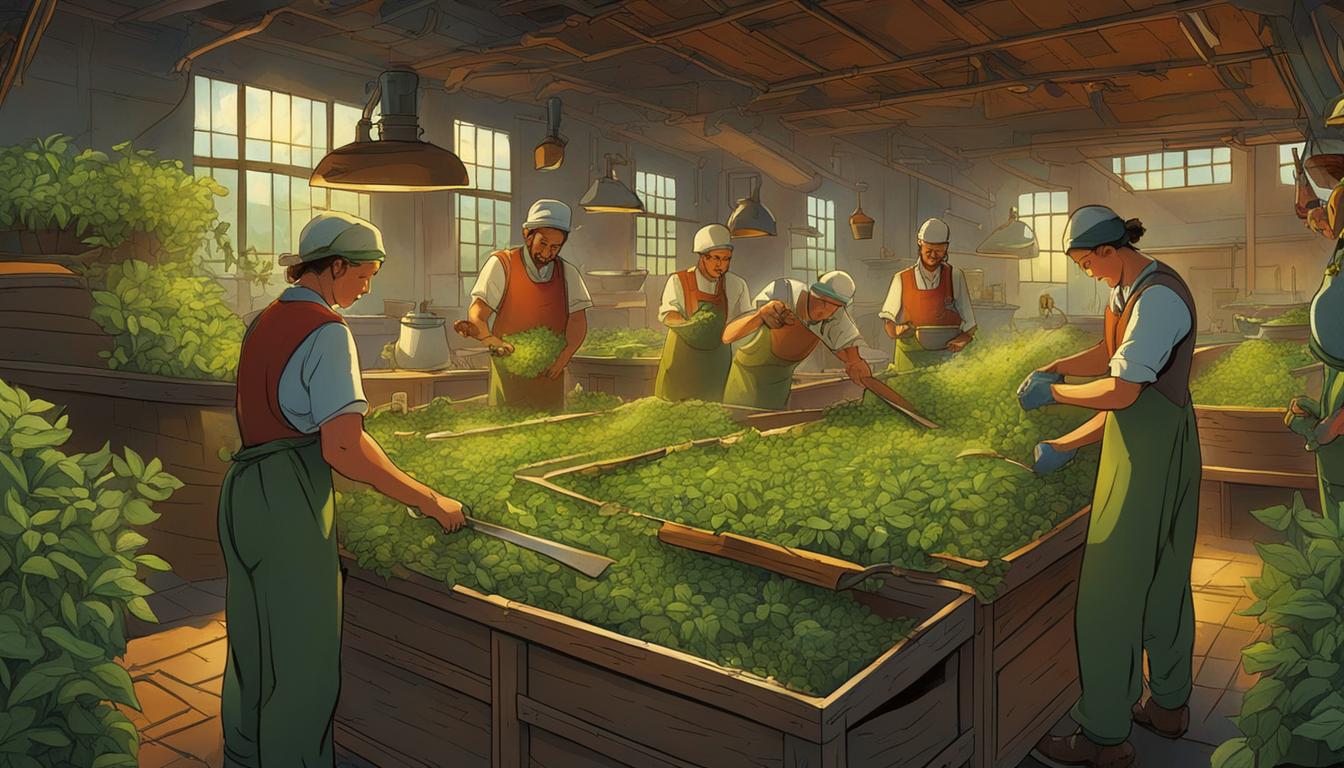
Processing medicinal plants for various purposes involves a series of essential steps to extract their bioactive constituents.
These steps include selecting the right solvent, choosing extraction methods, conducting phytochemical screenings, employing fractionation techniques, and utilizing identification procedures.
By following these processes, researchers and herbalists can unlock the therapeutic potential of medicinal plants and create oils and tinctures that offer natural remedies for various health conditions.
Key Takeaways:
- Medicinal plant processing involves extraction and determination of bioactive constituents.
- The choice of solvent plays a crucial role in the extraction process.
- Extraction methods include maceration, digestion, decoction, infusion, percolation, Soxhlet extraction, ultrasound-assisted extraction, and microwave-assisted extraction.
- Fractionation and purification techniques, such as chromatography, are used to separate and purify the extracted compounds.
- Identification techniques like mass spectroscopy, infrared spectroscopy, ultraviolet spectroscopy, and nuclear magnetic resonance spectroscopy are employed to characterize the obtained compounds.
Medicinal Plant Processing Methods for Experimental Purposes
The process of preparing medicinal plants for experimental purposes involves the extraction and determination of bioactive constituents. This includes selecting an appropriate solvent, choosing the extraction method, performing phytochemical screening, fractionation, and identification of the extracted compounds.
The solvent used for extraction can be polar (water, alcohols), intermediate polar (acetone, dichloromethane), or nonpolar (n-hexane, ether, chloroform).
Solvents for Medicinal Plant Extraction
| Solvent Type | Examples |
|---|---|
| Polar | Water, Methanol, Ethanol |
| Intermediate Polar | Acetone, Dichloromethane |
| Nonpolar | n-Hexane, Ether, Chloroform |
Extraction methods vary and can include maceration, digestion, decoction, infusion, percolation, Soxhlet extraction, ultrasound-assisted, and microwave-assisted extractions.
Fractionation and purification of extracted compounds are achieved through chromatographic techniques such as paper chromatography, thin-layer chromatography, gas chromatography, and high-performance liquid chromatography.
The compounds obtained are then characterized using identification techniques like mass spectroscopy, infrared spectroscopy, ultraviolet spectroscopy, and nuclear magnetic resonance spectroscopy.
Choosing the Right Solvent for Medicinal Plant Extraction
The choice of solvent for medicinal plant extraction is a critical step in the process. The solvent determines the efficacy of the extraction and the specific bioactive compounds that can be obtained.
When selecting a solvent, factors such as the nature of the plant material, desired bioactive compounds, and intended use of the final product should be considered.
There are two main categories of solvents: polar and nonpolar. Polar solvents, such as water, methanol, and ethanol, are effective in extracting polar compounds like sugars, amino acids, and phenolic compounds.
Nonpolar solvents, such as hexane and dichloromethane, are suitable for extracting nonpolar compounds like essential oils, fatty acids, and lipids.
To determine the polarity of solvents, a solvent polarity chart can be used. This chart ranks solvents based on their relative polarity, with the least polar solvents at one end and the most polar solvents at the other.
By referencing the chart, researchers can select the solvent with the appropriate polarity for their specific extraction needs.
| Solvent | Polarity |
|---|---|
| Water | Polar |
| Methanol | Polar |
| Ethanol | Polar |
| Acetone | Intermediate Polar |
| Dichloromethane | Intermediate Polar |
| n-Hexane | Nonpolar |
| Ether | Nonpolar |
| Chloroform | Nonpolar |
By carefully selecting the solvent based on its polarity and understanding the specific bioactive compounds of interest, researchers can optimize the extraction process and obtain the desired results in medicinal plant processing.
Common Extraction Methods for Medicinal Plants
When it comes to processing medicinal plants for their beneficial compounds, various extraction methods can be employed. Each method has its own advantages and is used depending on the desired outcome and the properties of the plant material. In this section, I will discuss some common extraction methods used in medicinal plant processing.
Maceration:
Maceration is a simple and widely used extraction method where the plant material is soaked in a solvent to extract the active compounds. This method is particularly effective for extracting compounds that are readily soluble in the chosen solvent. Maceration is a popular method for making herbal infusions and tinctures.
Digestion:
Digestion is a method that involves heating the plant material in a solvent to enhance the extraction process. The heat helps break down the plant cell walls, allowing for better extraction of the desired compounds. This method is commonly used when dealing with tougher plant materials that require more intense extraction.
Decoction:
Decoction is a method that involves the boiling of plant material in a solvent. It is particularly useful for extracting compounds that are not readily soluble in cold or room temperature solvents. Boiling the plant material helps release these compounds, resulting in a more potent extraction.
Infusion:
Infusion is a method where the plant material is steeped in a solvent, typically hot water, to extract the desired compounds. This method is commonly used when dealing with delicate plant materials that may lose their potency when exposed to heat. Infusions are commonly used in traditional herbal remedies and teas.
Percolation:
Percolation is a method that involves continuously passing a solvent through a packed bed of plant material. This method allows for a controlled and gradual extraction, resulting in a more thorough extraction of the target compounds.
Soxhlet Extraction:
Soxhlet extraction is a method that involves repeated extraction of the plant material using a reflux system. This method is particularly effective for extracting compounds that are not easily soluble in the chosen solvent. Soxhlet extraction is commonly used when dealing with plant materials that require prolonged extraction times.
Ultrasound-Assisted Extraction:
Ultrasound-assisted extraction is a method that utilizes ultrasonic waves to enhance the extraction process. The waves create cavitation in the solvent, resulting in better penetration of the solvent into the plant material and improved extraction of the target compounds.
Microwave-Assisted Extraction:
Microwave-assisted extraction is a method that utilizes microwave energy to heat the solvent and facilitate the extraction process. This method allows for faster extraction times and improved efficiency compared to traditional methods.
Comparison of Common Extraction Methods
| Extraction Method | Description | Advantages | Disadvantages |
|---|---|---|---|
| Maceration | Soaking plant material in a solvent | Simple and widely used method | Long extraction time |
| Digestion | Heating plant material in a solvent | Enhanced extraction of tough plant materials | Requires more intense extraction conditions |
| Decoction | Boiling plant material in a solvent | Potent extraction for less soluble compounds | May degrade heat-sensitive compounds |
| Infusion | Steeping plant material in a solvent | Gentle extraction method for delicate plant materials | May result in lower extraction efficiency |
| Percolation | Continuous solvent flow through plant material | Controlled and thorough extraction | Requires complex equipment |
| Soxhlet Extraction | Reflux extraction using a specialized apparatus | Efficient extraction for challenging plant materials | Long extraction time |
| Ultrasound-Assisted Extraction | Extraction with the help of ultrasonic waves | Improved penetration and extraction efficiency | Requires specialized equipment |
| Microwave-Assisted Extraction | Extraction with the help of microwave energy | Faster extraction times and improved efficiency | May result in uneven extraction |
Fractionation and Purification Techniques in Medicinal Plant Processing
After the extraction of bioactive compounds from medicinal plants, the next crucial step in the processing is fractionation and purification. Fractionation aims to separate the different compounds present in the crude extract, while purification focuses on obtaining a pure compound.
Chromatographic techniques are widely used for these purposes, offering efficient and precise separation and identification of individual compounds.
Fractionation Techniques
Chromatography is the primary method employed for fractionation in medicinal plant processing. Different chromatographic techniques are available, including paper chromatography, thin-layer chromatography (TLC), gas chromatography (GC), and high-performance liquid chromatography (HPLC). Each technique has its own advantages and is suited for specific applications.
- Paper chromatography: This technique involves the separation of compounds on a paper matrix, where the solvent moves up the paper by capillary action, carrying the compounds with it. The compounds migrate at different rates, allowing for their separation.
- Thin-layer chromatography (TLC): Similar to paper chromatography, TLC separates compounds based on their differential migration on a thin layer of adsorbent material. The compounds are visualized using appropriate detection methods.
- Gas chromatography (GC): GC utilizes a gaseous mobile phase to separate compounds based on their volatility and affinity for the stationary phase. This technique is particularly suitable for separating volatile compounds.
- High-performance liquid chromatography (HPLC): HPLC employs a liquid mobile phase to separate compounds based on their interaction with the stationary phase. It offers high resolution and is widely used in the pharmaceutical industry for compound identification and purification.
Purification Techniques
Purification of the fractionated compounds is essential to obtain a pure compound for further analysis or application. Multiple purification techniques can be employed, depending on the nature of the compounds and the desired purity level.
| Purification Technique | Description |
|---|---|
| Recrystallization | The compound is dissolved in a suitable solvent and then allowed to slowly crystallize. Impurities remain in the solution, while the purified compound forms crystals. |
| Column Chromatography | The compound is loaded onto a column packed with a stationary phase, and a solvent system is used to elute the compound. Different compounds elute at different rates, allowing for purification. |
| Preparative HPLC | HPLC can be scaled up for preparative purposes, where larger quantities of the compound are purified using an appropriate column and solvent system. |
| Crystallization | The compound is cooled or evaporated to induce crystallization, isolating the purified compound from the liquid or solid mixture. |
These purification techniques, combined with fractionation using chromatographic techniques, enable researchers to obtain highly purified compounds from medicinal plants.
The purified compounds can then be used for various applications, including further research, formulation development, and therapeutic purposes.
Identification Techniques for Medicinal Plant Compounds
Once the compounds obtained from medicinal plant extraction are fractionated and purified, they need to be identified. Identification techniques play a crucial role in determining the molecular structure and properties of these compounds.
Four commonly used identification techniques are mass spectroscopy, infrared spectroscopy, ultraviolet spectroscopy, and nuclear magnetic resonance spectroscopy.
Mass Spectroscopy
Mass spectroscopy is a powerful analytical technique that provides information about the molecular weight and structure of compounds. It measures the mass-to-charge ratio of ionized molecules, allowing for the identification of specific compounds.
This technique is especially useful in determining the presence of characteristic fragments and functional groups in the compound, aiding in its identification.
Infrared Spectroscopy
Infrared spectroscopy involves the analysis of the absorption, reflection, or transmission of infrared light by compounds. It provides valuable information about the functional groups present in the compound, allowing for its identification.
By comparing the infrared spectra of the compound with known reference spectra, researchers can determine the presence of specific functional groups and confirm the identity of the compound.
Ultraviolet Spectroscopy
Ultraviolet spectroscopy measures the absorption of ultraviolet light by compounds. It provides information about the electronic transitions and conjugated systems present in the molecule.
By comparing the absorption spectra of the compound with known standards, researchers can identify the compound and determine its concentration. Ultraviolet spectroscopy is particularly useful in the analysis of compounds with aromatic or conjugated structures.
Nuclear Magnetic Resonance Spectroscopy
Nuclear magnetic resonance (NMR) spectroscopy is a powerful technique that provides information about the molecular structure and connectivity of compounds.
It measures the interaction of atomic nuclei with a strong magnetic field, allowing for the identification of functional groups, the determination of the compound’s stereochemistry, and the analysis of molecular interactions. NMR spectroscopy is widely used in the identification and structural elucidation of organic compounds.
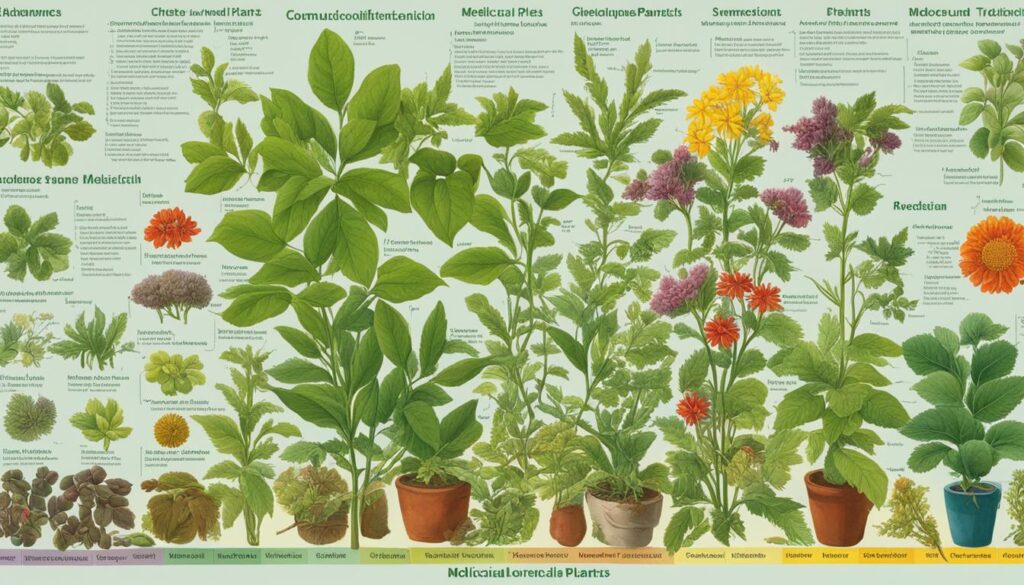
| Identification Technique | Key Information |
|---|---|
| Mass Spectroscopy | Determines the molecular weight and structure of compounds |
| Infrared Spectroscopy | Analyzes the functional groups present in compounds |
| Ultraviolet Spectroscopy | Measures the absorption of ultraviolet light by compounds |
| Nuclear Magnetic Resonance Spectroscopy | Provides information about the molecular structure and connectivity of compounds |
These identification techniques provide researchers with valuable insights into the composition and properties of medicinal plant compounds. By utilizing these tools, scientists can better understand the bioactive constituents present in plants and further explore their potential applications in medicine.
Herbal Tinctures: A Concentrated Liquid Form of Medicinal Plants
Herbal tinctures are concentrated liquid extracts of medicinal plants. They are made by soaking parts of the plant in alcohol, which acts as the solvent to extract the active components. Tinctures can be made from fresh or dried flowers, leaves, roots, barks, or berries.
The alcohol extraction process allows for the extraction of components that are not water-soluble. Tinctures are usually taken orally, with the liquid placed under the tongue for absorption. They are a convenient and effective way to consume herbal remedies.
Herbal tinctures offer several advantages over other forms of herbal preparations. The concentrated nature of tinctures means that a small dose can deliver a potent effect. Tinctures also have a long shelf life and are easy to store, making them a practical choice for those who prefer natural remedies.
Advantages of Herbal Tinctures:
- Concentrated form: A small dose is enough for desired effects
- Long shelf life: Tinctures can be stored for long periods without losing potency
- Easy to use and store: Convenient for daily use and travel
- Faster absorption: Liquid form allows for quicker absorption into the bloodstream
When making herbal tinctures at home, it is important to use high-quality ingredients and follow proper preparation techniques. The ratio of plant material to alcohol may vary depending on the desired strength of the tincture and whether the herbs are fresh or dried.
The tincture should be left to extract for several weeks, with occasional shaking to ensure proper infusion of the active components. After extraction, the tincture is strained and bottled, with proper labeling and storage to ensure easy identification and future use.
| Tincture Name | Main Ingredient | Health Benefits |
|---|---|---|
| Propolis Tincture | Propolis | Wound healing, allergy relief |
| Elderberry Tincture | Elderberry | Immune-boosting, anti-inflammatory |
| Cannabis Tincture | Cannabis | Pain management, seizures, nausea |
| Turmeric Tincture | Turmeric | Anti-inflammatory |
| Benzoin Tincture | Benzoin | Skin-healing properties |
| Echinacea Tincture | Echinacea | Immune system support |
How to Make Herbal Tinctures at Home
Making herbal tinctures at home is a simple and rewarding process that allows you to create your own concentrated extracts of medicinal plants. With a few basic steps, you can harness the healing properties of herbs and create personalized tinctures to support your well-being.
Preparation Steps:
- Gather the desired parts of the herb, such as flowers, leaves, roots, barks, or berries.
- Thoroughly wash and chop the herb material to increase the surface area for extraction.
- Place the chopped herb in an airtight glass jar, filling it about one-third to half of the way.
- Pour alcohol over the herbs until they are completely submerged. The alcohol serves as the menstruum, extracting the active components from the plant material.
- Seal the jar tightly to prevent evaporation and contamination.
Proportions and Extraction Time:
The ratio of plant material to alcohol varies depending on whether the herbs are fresh or dried. As a general guideline, the ratio for dried herbs is typically 1 part herb to 4 parts alcohol, while the ratio for fresh herbs is 1 part herb to 2 parts alcohol. The alcohol used should be at least 80 proof (40% alcohol by volume).
After the jar is sealed, store it in a cool, dark place for 6 to 8 weeks to allow the alcohol to extract the medicinal compounds from the herbs. During this time, occasional shaking of the jar helps to enhance the extraction process.
Bottling:
After the extraction period, strain the tincture to remove the plant material using a fine-mesh sieve or cheesecloth. Squeeze the plant material to extract as much liquid as possible. The resulting liquid is your herbal tincture.
Transfer the tincture into dark-colored glass bottles to protect it from light and store it in a cool, dry place. Proper labeling is essential to ensure the identification and future use of the tincture. Include the name of the herb, the type of alcohol used, the extraction date, and any specific instructions or precautions.
By following these simple steps, you can create your own homemade herbal tinctures, allowing you to customize your natural remedies and incorporate the healing power of plants into your daily life.
How to Use Herbal Tinctures
Herbal tinctures are versatile and can be consumed in various ways, depending on personal preference and the desired effect. The most common method of administration is to take the tincture orally.
To do this, simply fill a dropper or small syringe with the tincture and place it under the tongue for a few seconds before swallowing. This allows for rapid absorption into the bloodstream.
If the taste of the tincture is too strong or bitter, it can be diluted in a cup of warm tea or sparkling water. This not only helps to mask the taste but also provides a pleasant and refreshing way of consuming herbal remedies.
It is important to note that not all tinctures are suitable for dilution in tea, as some may lose their potency or effectiveness when exposed to high temperatures.
For those who enjoy cocktails, certain herbal tinctures can be used to add flavor and enhance the complexity of their favorite mixed drinks. The addition of a few drops of a herbal tincture can provide a unique twist and a subtle herbal note to cocktails, creating a truly distinctive drink.
Proper Dosage and Administration
The dosage of herbal tinctures can vary depending on several factors, including age, health condition, and the specific herb being used. It is crucial to follow the recommended dosage instructions provided by the manufacturer or a healthcare professional. Exceeding the recommended dosage could lead to adverse effects or reduced efficacy.
It is important to note that herbal tinctures are concentrated extracts, and a little goes a long way. Start with a low dosage and gradually increase if necessary. It is always best to consult with a healthcare professional before starting any herbal regimen, especially if you are taking other medications or have underlying medical conditions.

- Herbal tinctures can be consumed orally by placing a few drops under the tongue for quick absorption.
- Tinctures can also be diluted in tea or sparkling water to mask the taste and provide a pleasant drinking experience.
- Some herbal tinctures can be used to add flavor to cocktails, enhancing the complexity of mixed drinks.
Proper dosage and administration guidelines should be followed to ensure safe and effective use of herbal tinctures.
Common Herbal Tinctures and Their Benefits
Herbal tinctures are widely used for their various health benefits. Here are some common herbal tinctures and the advantages they offer:
Propolis Tincture
Propolis is a resinous substance collected by bees from tree buds. Propolis tincture has been found to have antimicrobial, anti-inflammatory, and antioxidant properties. It is often used to support wound healing, boost the immune system, and provide relief from allergies.
Elderberry Tincture
Elderberry tincture is derived from the berries of the elderberry plant. It is known for its immune-boosting properties and high content of antioxidants. Elderberry tincture can help strengthen the immune system, reduce inflammation, and provide support during cold and flu seasons.
Cannabis Tincture
Cannabis tincture is made from the flowers of the cannabis plant. It contains cannabinoids, such as THC and CBD, which have been found to have therapeutic effects. Cannabis tincture may have potential benefits for pain management, nausea relief, and even seizure control in certain medical conditions.
Turmeric Tincture
Turmeric tincture is derived from the root of the turmeric plant, which contains a compound called curcumin. Curcumin has potent anti-inflammatory and antioxidant properties. Turmeric tincture is used for its potential to reduce inflammation, support joint health, and promote overall well-being.
Benzoin Tincture
Benzoin tincture is made from the resin obtained from the bark of certain trees. This tincture is known for its skin-healing properties and is often used in topical applications for wound healing, soothing irritated skin, and reducing inflammation.
Echinacea Tincture
Echinacea tincture is derived from the roots, leaves, and flowers of the echinacea plant. It is commonly used to boost the immune system and may help reduce the severity and duration of cold and flu symptoms. Echinacea tincture is believed to have anti-inflammatory and antioxidant effects.
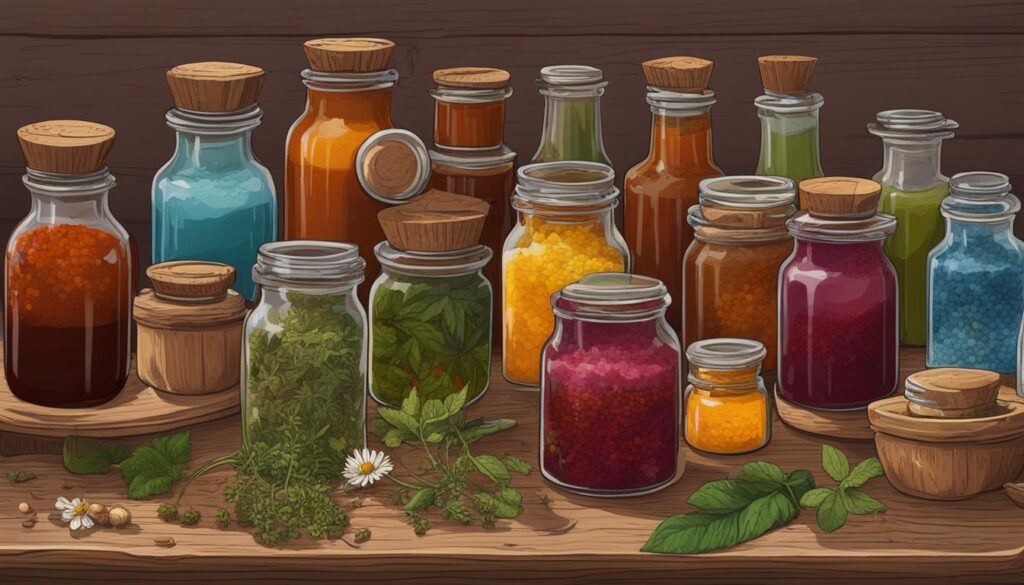
These are just a few examples of common herbal tinctures and their associated benefits. It’s important to note that individual results may vary, and it is always recommended to consult with a healthcare professional before starting any new herbal regimen.
Safety Considerations for Herbal Tinctures
When using herbal tinctures, it is important to be aware of potential side effects and take necessary safety precautions. While these tinctures offer a range of health benefits, it is essential to understand the potential risks associated with their use.
One important consideration is the possibility of herb toxicity. Some herbs can contain toxic compounds that may cause adverse reactions in certain individuals.
It is crucial to research and understand the herbs used in the tincture and their potential toxicity levels. Consulting with a healthcare professional can provide valuable guidance in ensuring the safe use of herbal tinctures.
Allergic reactions are another possible concern when using herbal tinctures. Some individuals may have allergies to specific herbs, which can lead to adverse reactions such as skin rashes, itching, or respiratory distress.
If you have known allergies or experience any unusual symptoms after using a tincture, discontinue use and seek medical advice immediately.
It is also important to consider potential interactions between herbal tinctures and medications. Certain herbs may interact with medications, affecting their efficacy or causing unwanted side effects.
If you are taking any prescription or over-the-counter medications, consult with your healthcare provider before using herbal tinctures to ensure there are no potential interactions that could be harmful.
Lastly, caution should be exercised when making homemade tinctures. Proper preparation and identification of plant materials are crucial to ensure safety. Using incorrect plant materials or improper extraction methods can lead to undesired effects.
It is recommended to follow established recipes and guidelines or consult with a herbalist or healthcare professional when making homemade tinctures.
FAQ
What is the process of preparing medicinal plants for experimental purposes?
The process involves extraction and determination of bioactive constituents, including selecting a solvent, choosing an extraction method, performing phytochemical screening, fractionation, and compound identification.
What solvents are commonly used for medicinal plant extraction?
Common extraction solvents include water, alcohols, acetone, dichloromethane, n-hexane, ether, and chloroform.
What are some extraction methods used in medicinal plant processing?
Extraction methods can include maceration, digestion, decoction, infusion, percolation, Soxhlet extraction, ultrasound-assisted extraction, and microwave-assisted extraction.
How are the extracted compounds fractionated and purified?
Fractionation and purification are achieved through chromatographic techniques like paper chromatography, thin-layer chromatography, gas chromatography, and high-performance liquid chromatography.
How are the bioactive compounds obtained from medicinal plants identified?
Identification techniques include mass spectroscopy, infrared spectroscopy, ultraviolet spectroscopy, and nuclear magnetic resonance spectroscopy.
What are herbal tinctures and how are they made?
Herbal tinctures are concentrated liquid extracts of medicinal plants. They are made by soaking plant parts in alcohol to extract the active components.
How can I make herbal tinctures at home?
To make herbal tinctures at home, gather the desired plant parts, wash and chop them, place them in an airtight jar, cover with alcohol, and let the mixture extract for 6 to 8 weeks. Strain and bottle the tincture after extraction.
How can herbal tinctures be consumed?
Herbal tinctures can be taken orally by placing the liquid under the tongue for a few seconds before swallowing. They can also be diluted in tea or sparkling water, or used to add flavor to cocktails.
What are some common herbal tinctures and their benefits?
Common herbal tinctures include propolis tincture for wound healing and allergy relief, elderberry tincture for immune-boosting and anti-inflammatory properties, cannabis tincture for pain management and nausea, turmeric tincture for anti-inflammatory effects, benzoin tincture for skin healing, and echinacea tincture for immune system support.
Are there any safety considerations when using herbal tinctures?
It is important to consider potential side effects, herb toxicity, allergic reactions, and interactions with medications. Consultation with a healthcare professional is recommended, especially if you are taking other medications.

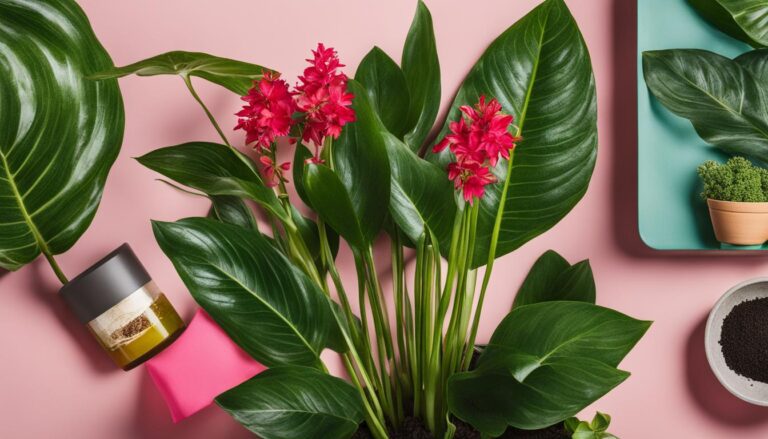
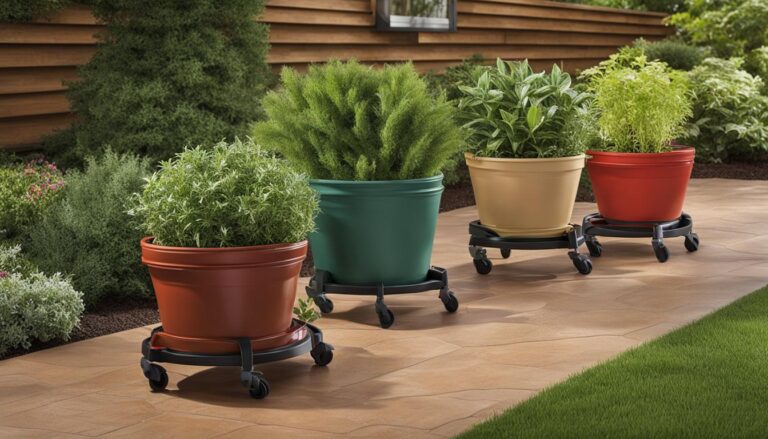
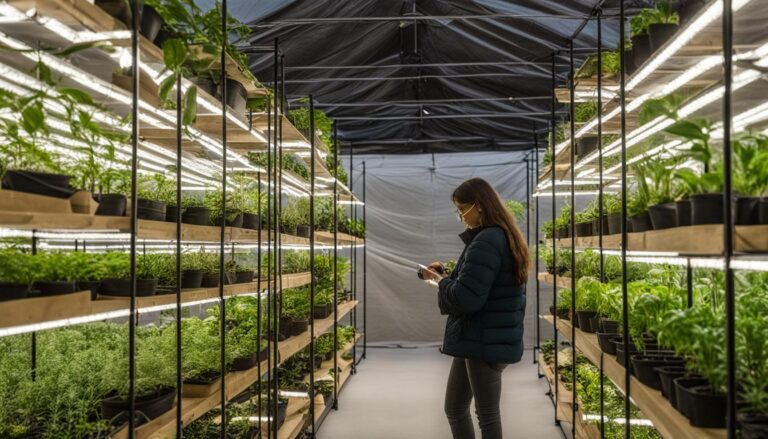
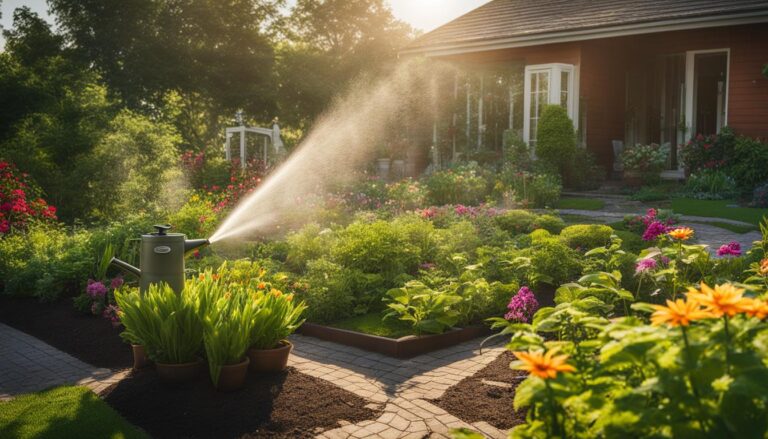
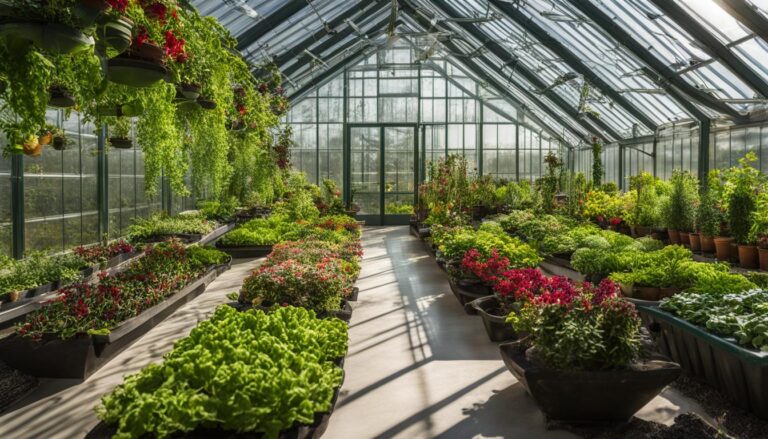
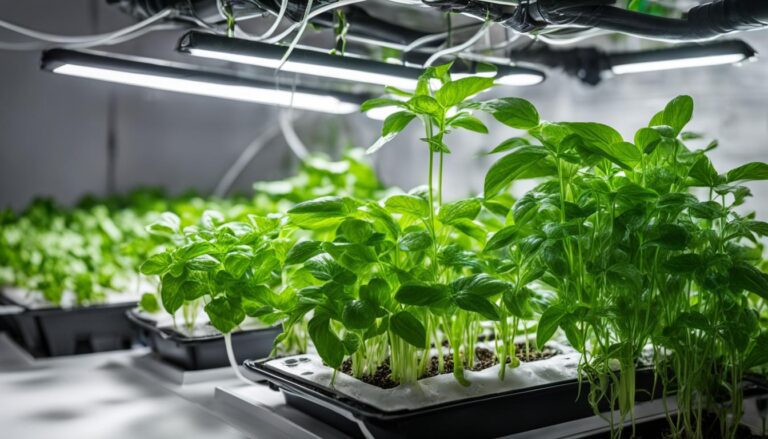
3 Comments
Comments are closed.